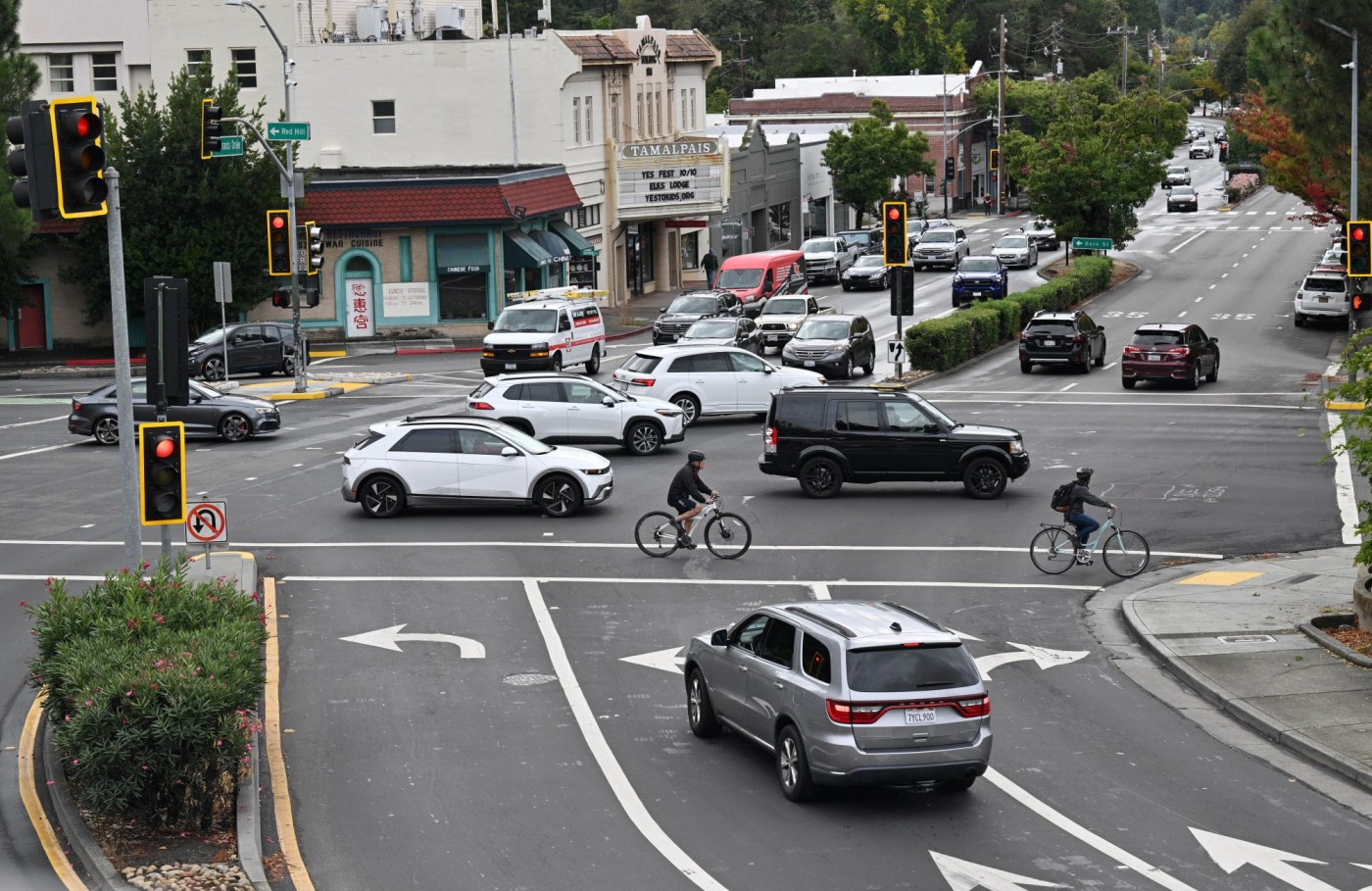
San Anselmo hopes to reduce downtown congestion with the help of artificial intelligence.
Related Articles
Walmart partners with OpenAI to offer shopping on ChatGPT
AMD says Oracle is committing to widespread use of new AI chips
Letters: Tricky numbers make AI centers seem thirsty
Gov. Newsom signs law to protect kids from the risks of AI chatbots
OpenAI partners with Broadcom to design its own AI chips
The new system was installed at the Hub, at the intersection of Sir Francis Drake Boulevard and Red Hill Avenue, in August. Now, the town is rolling out the technology for all of its traffic lights, with the help of a grant from the Transportation Authority of Marin.
Assistant Public Works Director Scott Schneider said the technology can see up the road and determine the speed and position of vehicles in real time, and adjust the traffic signal accordingly. This reduces wait times and increases safety. Typical detection cameras can only identify if there is a vehicle at the light.
“The Hub, because it’s so complex, we’ve never been able to synchronize it,” Public Works Director Sean Condry said. “You can’t synchronize the Hub in any one direction or else you create problems in another direction.”
A bird is perched on a road camera at the intersection of Sir Francis Drake Boulevard and Red Hill Avenue in San Anselmo, Calif. on Tuesday, Oct. 14, 2025. (Sherry LaVars/Marin Independent Journal)
The Hub is considered the most congested intersection in Marin, according to the town. A traffic study of the area was completed in 2023, Schneider said. The adaptive technology was recommended as a short-term solution until longer term fixes, like a multi-lane roundabout, could be explored more in depth.
“It’s saving like 90-plus hours a day for 65,000 vehicles a day,” Condry said.
Since then, an initial analysis by San Francisco-based Roundabout Technologies show wait times have been reduced by over 30% at peak hours. However, Schneider noted the improvement data is imperfect. The town is redoing the traffic study at the Hub to make the comparisons “apples to apples,” he said.
“The statistics on it is something we’re going to have to work out,” Schneider said. “I think anecdotally, users have been noticing. I’ve had a lot of people come up to me and say they’ve noticed it’s faster to get through the Hub.”
The town has received a $250,000 grant from TAM to expand the technology to all of its 12 traffic lights. The new technology was installed at the intersection of Bank Street and Sir Francis Drake Boulevard on Tuesday.
“That’s the one we get the most complaints over,” Schneider said.
As the technology expands, the AI system will be able to communicate between intersections, which is expected to decrease wait times and traffic congestion further.
The system is made by Roundabout Technologies. Installation costs totaled about $30,000 — $5,000 for the adaptive controller and $25,000 to install new cameras. The system at the Hub will cost about $12,000 a year to operate, according to the town.
Other intersections are expected to cost between $10,000 and $15,000 to install the cameras, controller and cables, and about $4,000 a year to operate. The TAM grant is expected to cover the first two years of service in addition to the installation costs.
Condry said he is aiming to have the technology installed at the remaining 10 lights within six to 12 months.